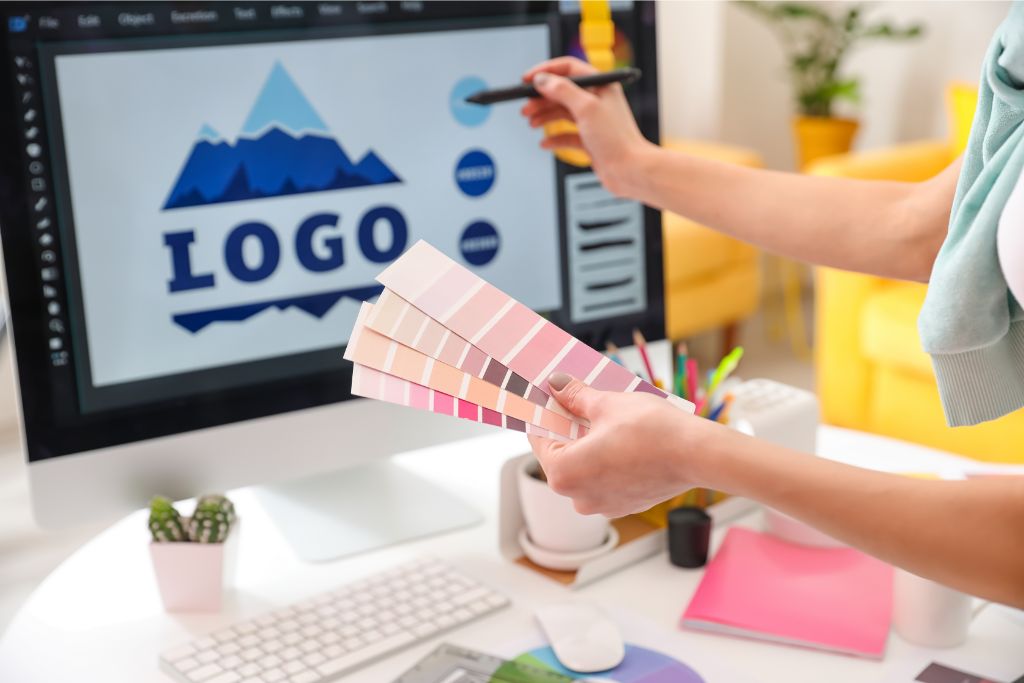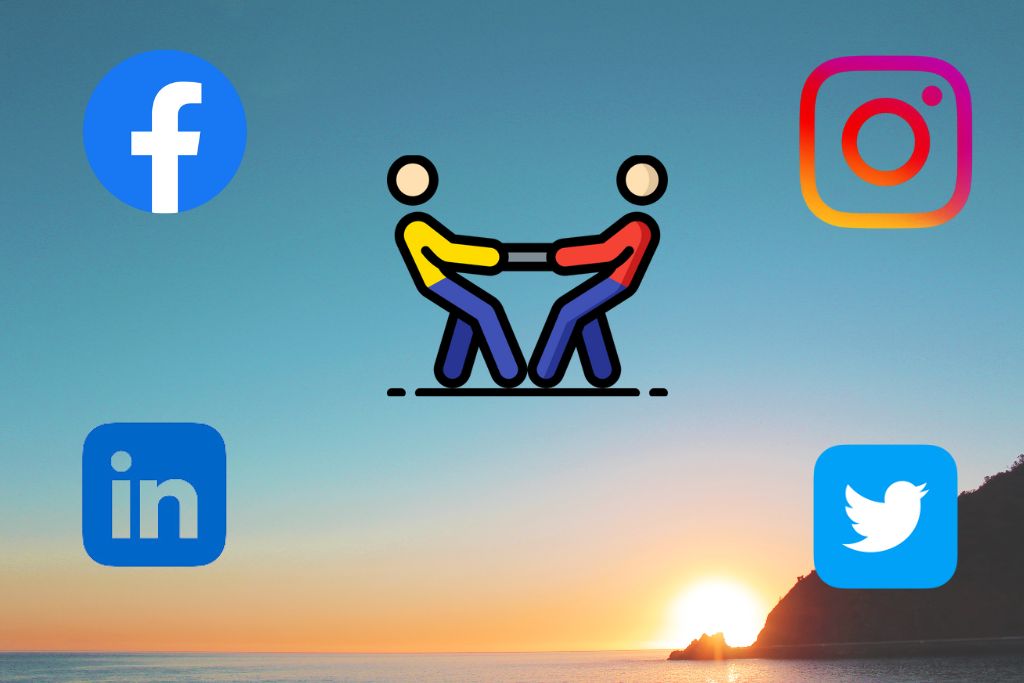The Art Of Social Media A Guide For Freelance Graphic Designers

You’re a gifted freelance graphic designer. Is your work seen enough? In our digital age, social media mastery isn’t a choice. It’s a must.
Breathe easy! This guide will teach you how to use social media to flaunt your creativity. Engage with your audience. Attract more clients.
Ready? Let’s dive in!
Table of Contents [show]
Understanding the Importance of Social Media
As a freelance graphic designer, you’ve got to understand how crucial social media can be for your career. It’s not simply about posting and scrolling – it’s about creating a robust digital presence and implementing innovative branding strategies.
Think of your social media platforms as an extension of your portfolio. Yes, they’re a showcase for your work, but they also offer potential clients insight into who you are. Your personality, style, and creativity should shine through in every post. A well-crafted Instagram feed or engaging Twitter thread can turn followers into customers.
Your digital presence on social media is critical to building recognition and trustworthiness in the industry. Consistency is key here; stick to a visual theme that reflects your style and ensure your messaging aligns with your brand values.
Now, let’s talk branding strategies. Choose one or two platforms where you think you’ll find your target audience and focus on those. Be active, promptly engage with followers by responding to comments or messages, and share behind-the-scenes content or work process – make them feel included in your journey!
Remember: social media isn’t just another chore – it’s an investment in yourself and your future success.
Choosing the Right Social Media Platforms
You’re about to delve into social media platforms, each offering unique advantages for your graphic design career.
Imagine using Facebook’s vast network to connect with potential clients and fellow designers, showcasing your stunning visual creations on Instagram, and making valuable professional connections on LinkedIn.
Let’s explore how to harness these platforms to maximize their benefits and propel your career forward.
Facebook for Networking
Freelance graphic designers must utilize Facebook as a networking tool. This platform is more than just sharing memes and cat videos; it’s an avenue to showcase your work, engage with potential clients, and stay updated with the latest design trends.
You might be wondering: How does one effectively use Facebook for networking? Here are three simple steps:
- Understand the Facebook algorithms: The more engagement your posts get, the higher they appear in people’s feeds.
- Invest in Ad promotions: They can increase visibility and reach a wider audience.
- Regularly share your work: It’s essential to keep your page active.
Instagram for Visual Showcase
While Facebook is great for networking, don’t underestimate the power of Instagram. It is a platform that allows you to showcase your work visually. It’s all about visual storytelling and creating an appealing Instagram aesthetic representing your unique style.
Your feed can be a living portfolio, captivating audiences with every scroll. Use strong images to tell a story and draw in followers. A well-curated feed can speak volumes about your brand. Think of it as your visual voice in the digital world.
Be consistent with colors, themes, and styles to create an overall aesthetic that reflects you as a designer. Your Instagram profile could be the first impression potential clients have of you – make it count! Use this platform effectively and watch how it transforms your freelance graphic design career.
LinkedIn for Professional Connections
Don’t overlook the potential of LinkedIn for forging professional connections and showcasing your design skills on a more corporate platform. As you navigate this powerful networking site, remember to optimize your profile, use LinkedIn Analytics, and make meaningful connections.
Here’s how:
- Profile Optimization: Invest time in making your profile appealing. Highlight your skillset, upload eye-catching designs, and ensure your bio reflects your creative vision.
- LinkedIn Analytics: Pay attention to these insights. They’ll show who’s checking out your work, which can help you target potential clients or employers effectively.
- Building Connections: Don’t just collect contacts! Engage with posts, join groups related to graphic design, and start conversations.
Remember: LinkedIn isn’t just an online CV—it’s a dynamic space where you can showcase the breadth of your expertise while expanding your professional network.
Curating a Compelling Profile
Curating a compelling profile is not just about showcasing your best work; it is also about expressing your unique style and personality. Profile Aesthetics and Bio Crafting in social media have become crucial tools to attract potential clients or employers.
Think of your profile as a digital canvas, where each element contributes to the overall aesthetic. Choose a color scheme that reflects your design philosophy, and make sure your portfolio images align with this palette. Your avatar should be professional yet approachable, showing you’re serious about your craft without alienating prospective connections.
Your bio is another critical component in shaping perceptions. It’s where you tell people who you are, what you do, and why they should care. Be concise but dynamic; use punchy sentences that encapsulate key aspects of your professional identity.
Don’t forget to inject some personality into it! Are you an avid coffee drinker? Or maybe a Star Wars fan? Small details like these can resonate with viewers on a personal level while setting you apart from others.
Remember: You’re not just building a profile; you’re crafting an experience that showcases your skillset and who you are as an individual.
Showcasing Your Work
After creating a compelling profile, your next step is to showcase your work. A well-curated portfolio presentation can often decide between securing clients or losing them. So, let’s delve into how you can optimize this crucial aspect!
Your portfolio is not just a collection of your work; it reflects you as a creative professional. Think of it as your visual resume – an opportunity to impress prospective clients with your skills and versatility. Be meticulous about what goes in there! Only include your best pieces that reflect the breadth and depth of your creativity.
In terms of branding strategies, consistency is key. Your portfolio should echo the style and tone you’ve established on your profile. This continuity helps build trust with potential clients because they’ll know exactly what to expect from you.
High-quality images are essential but don’t overlook the power of stories behind each design project. Sharing these insights adds depth to your portfolio and creates an engaging user experience.
Engaging with Your Audience
You’ve put your work out there; now it’s time to engage with your audience! This next chapter will guide you in responding to comments and effectively dive into discussions.
Responding to Comments
It’s vital to interact with your followers by promptly responding to comments on your posts. This builds a strong connection and shows you value their input. But remember, comment etiquette is crucial. Here are some tips:
- Always stay professional
- Keep in mind everyone can see your responses.
- Maintain a polite tone even when disagreeing.
- Thank those who leave positive feedback
- A simple ‘thank you’ can go a long way.
- Show appreciation for their time and thoughts.
- Handle negative feedback gracefully
- Please don’t get defensive; instead, use it as an opportunity to learn and grow.
- Apologize if necessary and offer solutions where possible.
Participating in Discussions
Participating in discussions isn’t just about voicing your opinion and listening to and learning from others. Understanding and practicing good discussion etiquette is crucial to your social media journey.
Remember, you’re interacting with real people out there. Be respectful and considerate. Don’t dominate the conversation or talk down to others – that’s a surefire way to lose followers quickly. Instead, show genuine interest in what they’re saying.
Content sharing is another crucial aspect of discussions. Share valuable content that can help others while showcasing your expertise as a graphic designer. But don’t just dump links; provide context and encourage engagement.
In short, Listen well, speak respectfully, and share wisely – these are key elements to successful participation in online discussions!
In today’s digitalized world, properly knowing how to use hashtags and keywords can significantly boost your visibility as a freelance graphic designer. This is where hashtag strategies and keyword optimization come into play.
Firstly, let’s talk about hashtag strategies. Think of hashtags as the signposts that guide social media users toward your content. You’ve got to be strategic in your usage – don’t just put a ‘#graphicdesign’ on every post because it’s relevant; mix it up! Use specific tags related to each project, like ‘#logodesign’ or ‘#printmedia.’ Ensure you’re joining in on trending tags when they fit with your work, too.
Next is keyword optimization. This might sound techy, but it’s straightforward once you get the hang of it. These are words or phrases people might type into search engines when they’re looking for services like yours. Incorporate these naturally into your posts or profile bio–you’ll be amazed at how much this simple step can improve your visibility online!
Consistency is Key
You can’t underestimate the power of consistency when making your mark online. Especially as a freelance graphic designer, brand consistency is not just about regular posting; it’s also about maintaining steady quality and style in your posts that reflect your unique brand.
Understanding the algorithm of social media platforms can give you an edge in achieving this consistency. How? Let’s paint a picture:
- Consistency influences algorithms: Regular and consistent posts signal to these systems that you’re an active user, bumping up your content.
- Brand consistency helps build trust: Your audience begins to identify and connect with your design style.
- It sets expectations: Followers will know what content to expect from you.
- Differentiation from others: Consistent branding sets you apart from other designers in this crowded digital space.
- It aids recognition: This familiarity becomes synonymous with your brand identity.
Remember these points, as they’ll help guide your social media strategy.
Evaluating Your Social Media Performance
It’s vital to regularly check how well you’re doing online, which involves evaluating your performance on various platforms. Analyzing metrics can help clarify what’s working and what isn’t in your social media strategy.
Consider the following table:
| Metrics | Why It Matters |
|---|---|
| Engagement | This shows how much interaction your posts are generating. High engagement means that people are interested in your content. |
| Reach | This is about the number of unique users who’ve seen your post. A broader reach usually translates into more exposure for you and potentially new followers or clients. |
| Influencer Collaborations | Working with influencers can help boost engagement and reach by exposing you to their audience. |
Remember, numbers can only tell part of the story – don’t forget to look at qualitative feedback from comment sections or direct messages.
Influencer collaborations can be a great way to spread awareness about your work and gain new followers and potential clients.
Stay tuned for our next subtopic: ‘Boosting Your Online Presence.’ The better you understand how well you’re doing online, the more effectively you’ll be able to improve!
BONUS
Maximize your freelance graphic design business with OnlySocial’s essential Post Planning and Scheduling function. Seamlessly plan and schedule your posts across all social networks, ensuring consistent and strategic content delivery. With unlimited posting and the ability to manage unlimited social profiles, you can expand your online presence without limitations. Don’t miss out on optimizing your social media strategy. Sign up for a commitment-free 7-day trial today.
Frequently Asked Questions
Oops! You may be overlooking profile optimization on social media.
Have you got a content strategy? If it’s weak, you’re stumbling.
Are you interacting with your audience? If not, you’re missing out.
These missteps can block your chance to reel in and keep clients.
Dive into online courses like ‘Platform Selection’ and ‘Content Strategy.’ Blogs, webinars, and eBooks? They’re goldmines, too. Keep an eye out for networking events and workshops. They often discuss these topics.
Safeguarding your creations on social media isn’t an easy task. You might want to think about digital watermarking. This could help keep the thieves at bay. Another option is copyright registration. This gives you legal protection. It also guarantees you’re the sole one reaping the rewards of your imaginative effort and dedication.
Don’t dodge negative feedback on your posts. See it as a chance to grow. Always engage with respect. Listen to valid points. Use them to improve your content.
Sure thing! Teaming up with influencers can skyrocket your online fame. Your art gets showcased to a broader crowd, possibly ushering in fresh gigs and chances. It’s a total game-changer for you, a freelance graphic designer.






